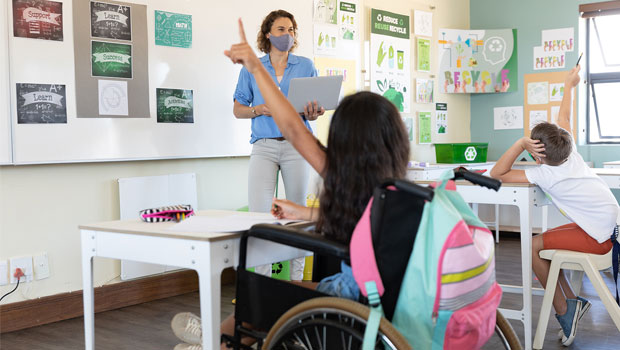While the pandemic has presented many serious challenges and hardships to teaching and learning, teachers say there are some unexpected bright spots they don’t want to lose when schools are able to resume more normal operations.
During a virtual presentation with author and award-winning education leader Dr. Peter Gamwell, teachers from Connecticut, North Carolina, and Ontario, Canada shared their stories about the positive moments they’ve experienced this year. The talk was offered by the Teacher Leader Fellowship Program at CCSU in partnership with CEA.
Anthea Grotton, a kindergarten teacher in Tolland, said that her school started the year with a hybrid model, and the smaller class sizes made a big difference to her young students.
An administrator remarked to Grotton on the first day of school that, unlike in a usual year, no kindergarten or preschool students were crying. Grotton said, “With smaller groups we were able to make sure every student felt safe and secure.”
She added that it can be daunting, even for a middle or high schooler, to walk into a school of 500 or 1,000 students and said that when students feel safe and secure more learning can occur.
“With smaller learning cohort models, we’ve had a hyper supportive environment for students,” said Brianna Tuscani, an English teacher in Durham, North Carolina.
Tuscani has leveraged the opportunities of online learning to connect her students with people, places, and professions that they would not ordinarily have access to. She was able to connect her students to a rapper whose songs students analyzed in class as well as host virtual meetings with city and state officials that allowed students to share ideas about policies and practices that affect them.
Tuscani said that online learning has also allowed the ability to build in breaks to address students’ developmental needs. “It’s not irrelevant to put curriculum aside to build community,” she says.
“We’re striving to get back to normal, but normal didn’t work for everyone,” said Bristol fifth grade teacher Julia Darcy. “We need to reimagine schools and create a new normal.”
She relayed the example of a student who is very shy and quiet during in-person learning but who comes alive during virtual meetings and shares their sense of humor. “It made me question what about the classroom environment doesn’t work for a child that does when we are home.”
Maintaining a physical distance from other students is hard for many children, but Darcy said that others appreciate the space and do better when they’re not seated in close table groups.
Darcy said that, with students sitting farther apart and the need to maintain social distance, she can’t pull together a small group and instead must work with students individually.
“You learn so much more about students,” she said. “A parent emailed me at the beginning of the year saying, ‘My son has never been so happy coming to school because he has never felt so connected to a teacher.’”
She added, “Before there were some students who were not thriving, how can we take some of these lessons to create new practices so all students feel comfortable and safe so they can thrive and learn?”
Stratford teacher Jennier Leniart said, “One thing I appreciate about the way we’re teaching right now is that we’re allowed to go slow and make sure students’ emotional needs are met. I’ve learned so much about my students and their parents and know more about them than I have in the last 26 years of teaching. I want to keep that going forward.”
Leniart said she has also noticed how additional space benefits some students. “They can really think and be creative.”
“People are still in the mindset of, ‘We have to go back to what was or create elements of what was or still have the same expectations,’” said CCSU faculty member and former State Commissioner of Education Betty Sternberg. “This is a prime opportunity for folks to step back and think about what’s really important and what are we trying to get kids to know and be able to do.”
Jennifer Norman, an English teacher at Ellis Technical School in Danielson, said, “What comes next has to be deliberate. We all wanted to solve the problem of COVID teaching so fast that we created things that are not sustainable–and we are exhausted. We have to sit in the discomfort of the moment and not rush into what’s next.”
Watch the entire presentation and discussion.
This year’s Teacher Leader Fellowship Program Institute will take place virtually on May 25. Subscribe to BlogCEA to be notified when registration opens.







